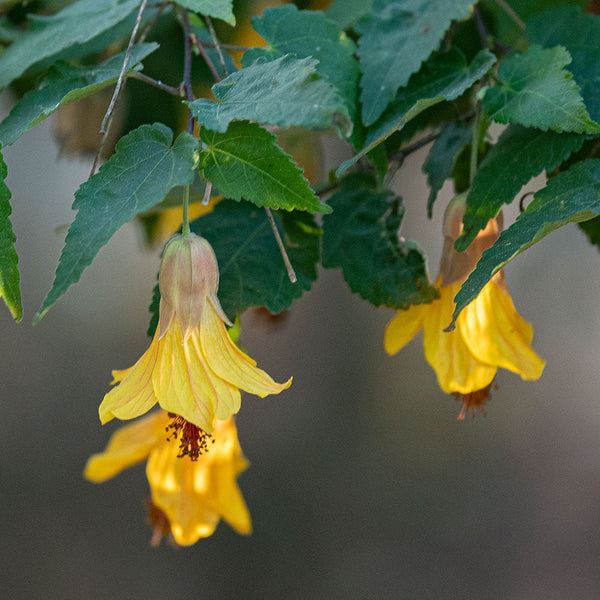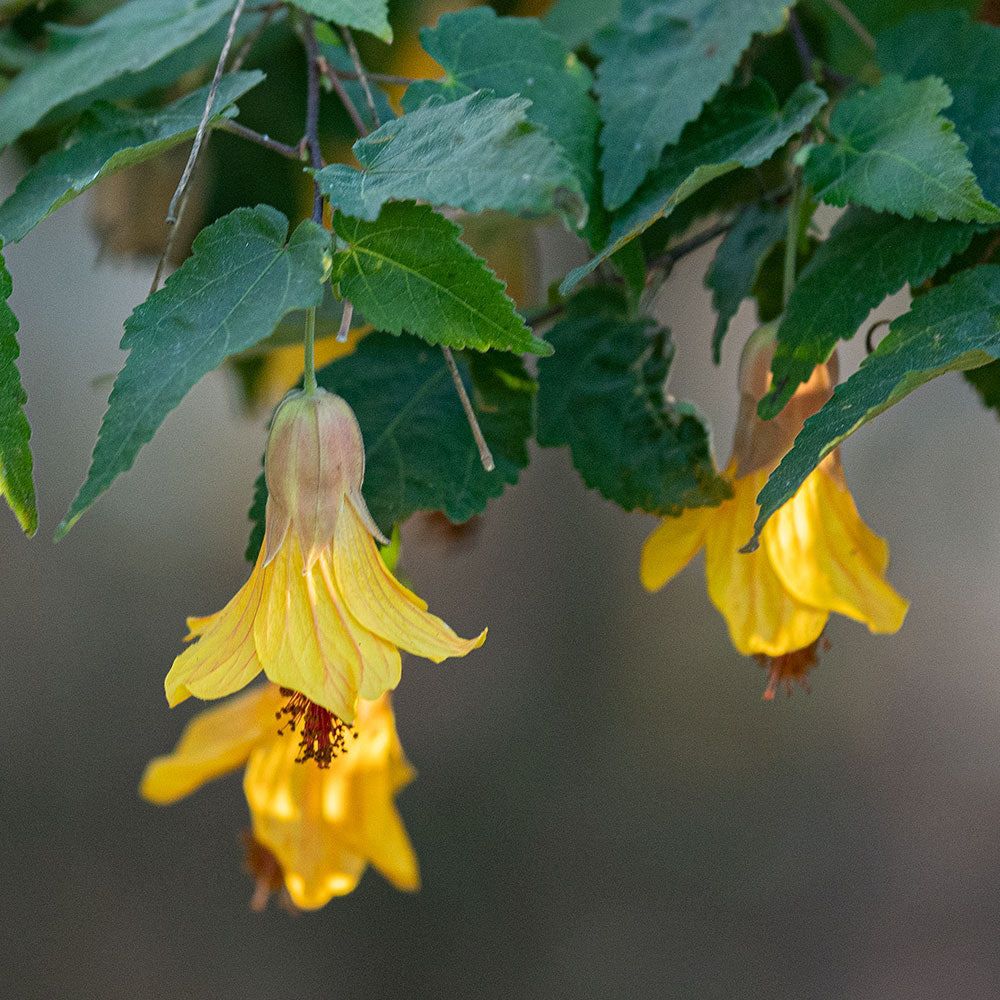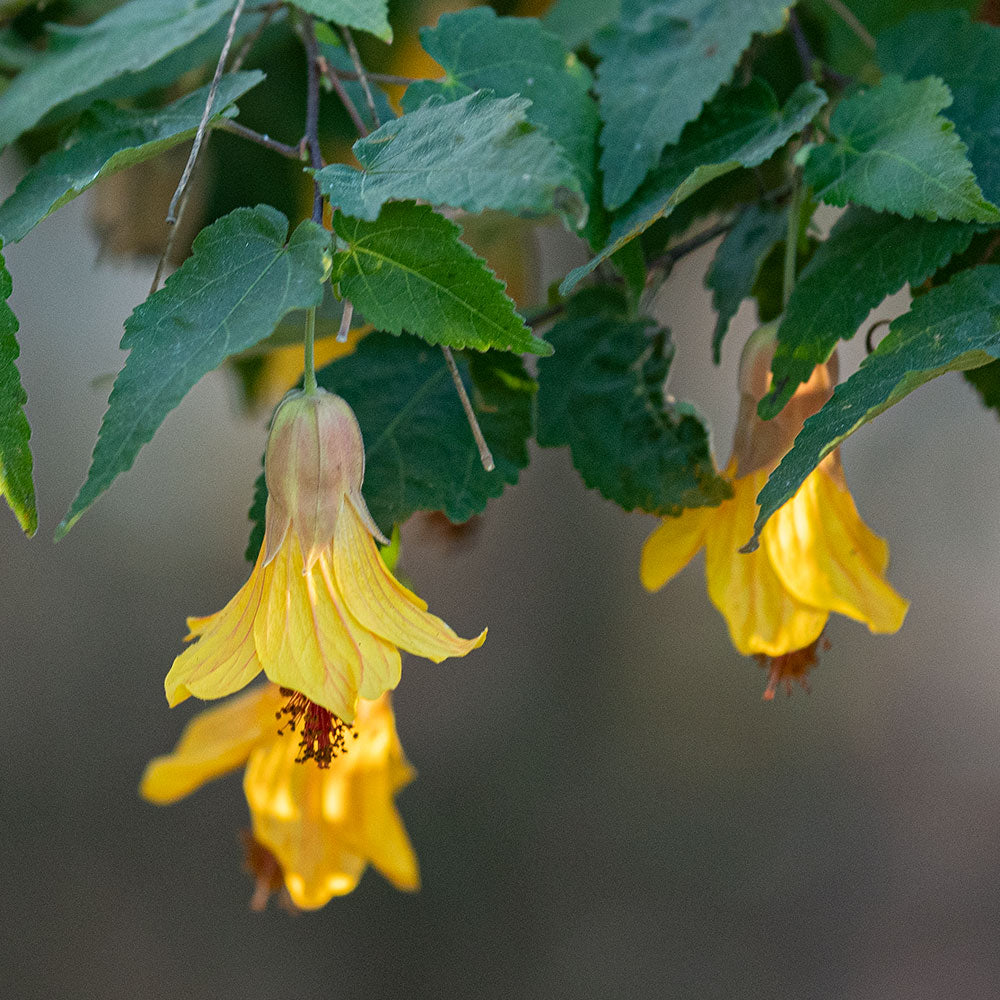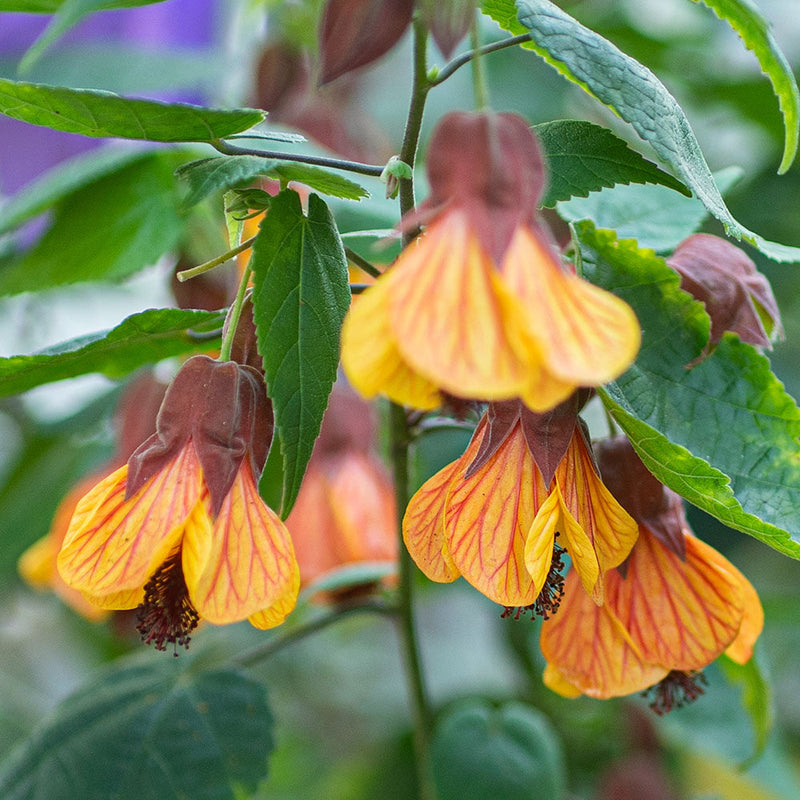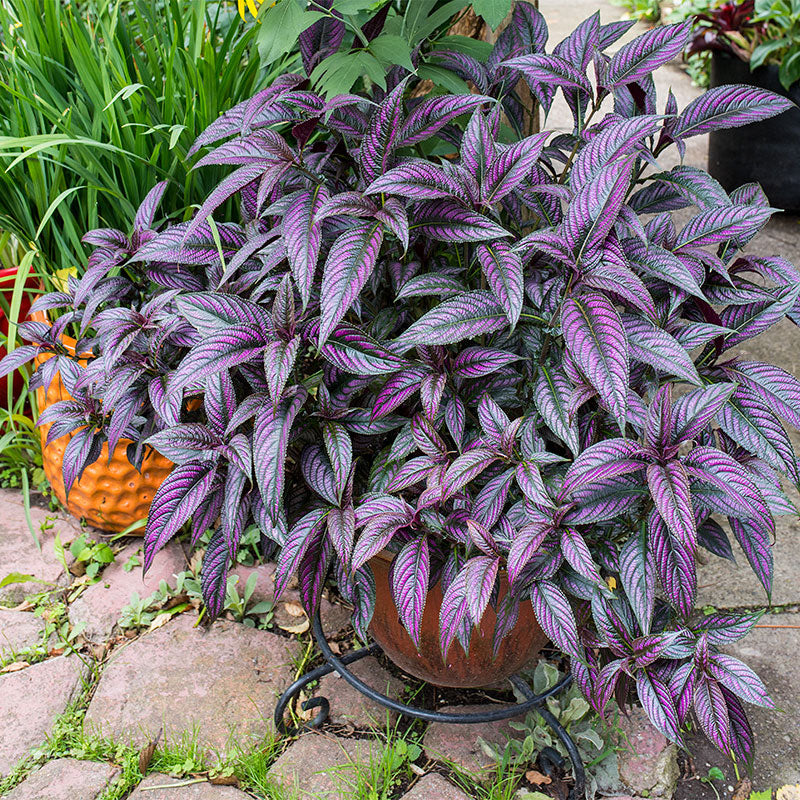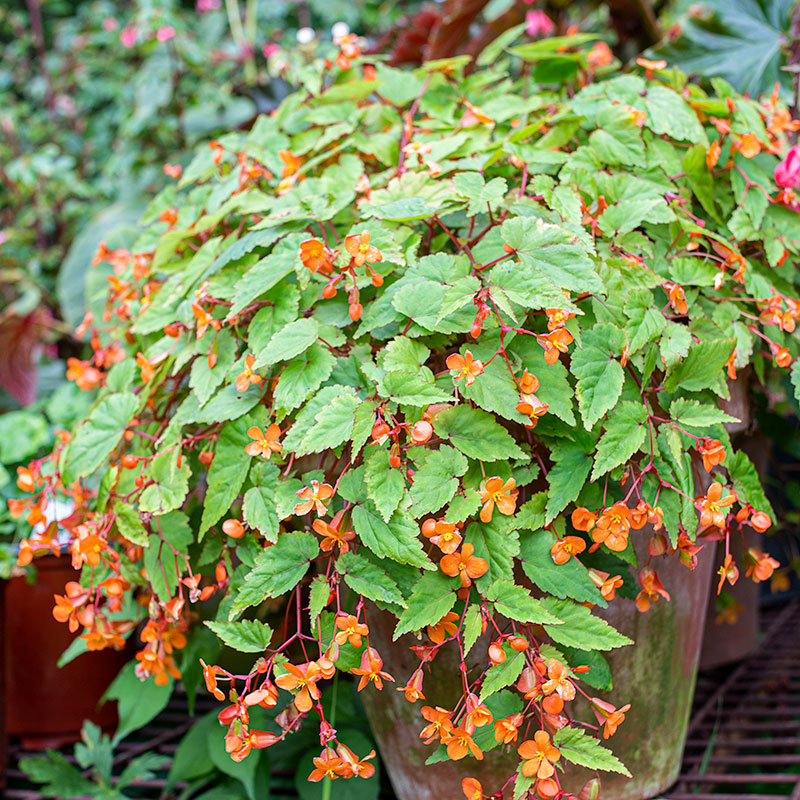Plant
Abutilon 'Kentish Belle'
Abutilon hyb.
Buttercup yellow flowers with flaring bells drip from the ends of the arching branches of 'Kentish Belle'. A compact grower for containers on the summer patio, it blooms almost continuously, the 1" bells swinging from thin branches clad with palmate leaves resembling maple leaves. Favored as a houseplant since the Victorian era, it is an easy to grow award-winning variety.
SKU #P8536
Currently Unavailable
Notify Me When Available
Growing Companions






























